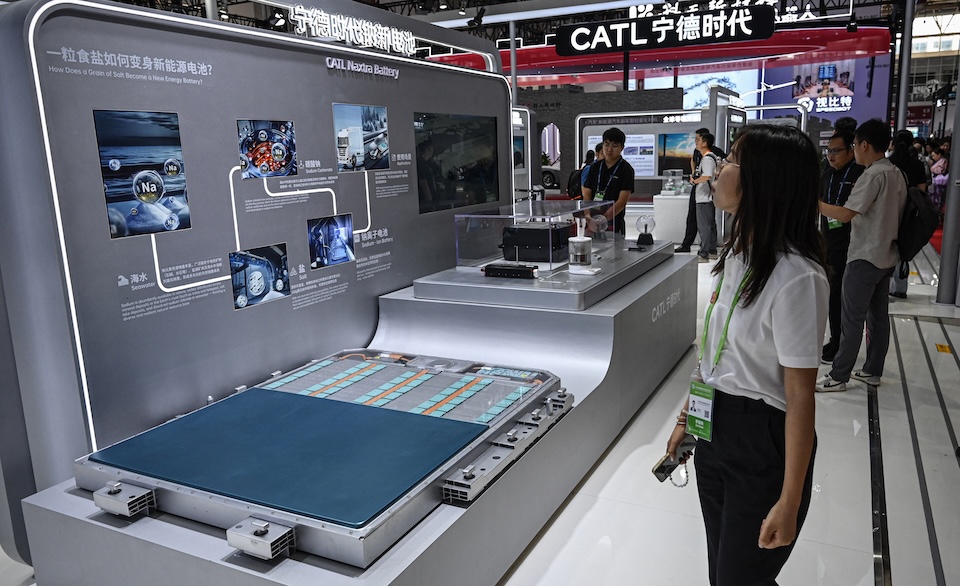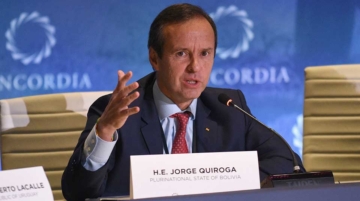
This is a free preview of the upcoming Critical Minerals Weekly Digest, part of the new CGSP Intelligence service launching in Summer 2025.
Global critical mineral markets this week reflected the mounting intersection of geopolitics, industrial policy, and resource nationalism. China signaled flexibility toward India’s rare earth needs, but investors remain cautious about whether such concessions are tactical rather than permanent. Meanwhile, the U.S. advanced efforts to reduce mineral dependence on Beijing, using tools ranging from mining waste recovery to tariffs that redirect capital flows toward allied suppliers. Australia, South Africa, and India all moved to reposition themselves as indispensable players in a world where mineral supply chains are increasingly treated as extensions of national security.
This week in critical minerals:
China Signals Willingness to Address India’s Rare Earth Needs
Amid rising tensions, Beijing assured India’s leadership during border talks that it would address supply shortfalls in rare earths, despite Indian imports remaining 58% below January 2025 levels. It also eased access to powerful magnets using rare earth minerals.
Why This Matters:
It remains unclear whether the move represents a permanent warming of mineral trade ties or a selective concession suited to the moment. India will likely also wonder whether it is a tactical lever or a foundational shift and will probably continue to hedge with diversified supply chains, as seen in their recently announced mineral cooperation with Japan.
U.S. Study: Mining Waste Could Lessen Reliance on China
A study from Colorado School of Mines revealed that recovering minerals from mining waste in the U.S from copper, lithium, rare earths, nickel, germanium, and gallium could substitute current imports, including from dominant supplier China. Such reprocessing could boost access to both critical minerals and rare earths.
Why This Matters:
Reducing dependency on China via domestic recovery aligns economic policy with environmental strategy. The research could unlock opportunities for funding in waste mining, a low-risk way to increase control over supply chains.
Rudd: Australian Minerals Should Be “Defense Goods”
The Australian ambassador to the U.S., Kevin Rudd, stressed that Australia’s critical mineral output is vital for U.S. submarines and fighter jets and should be legally treated as a defense-grade supply.
Why It Matters:
Labeling minerals as defense goods creates supply chain complications and could possibly escalate geopolitical competition. It would mean reclassifying mineral projects—especially those in partnership with allies—as strategic assets eligible for defense-related certifications and preferential contracts, a move that would necessarily add some curbs to market trade.
Tasmania Rescues Liberty Bell Bay With $20M Loan
The government of the Australian state of Tasmania gave Liberty Bell Bay a $20 million loan to restart its manganese smelter. They’re planning to start production in September, and they already have contracts with U.S. steel companies.
Why This Matters: Manganese is indispensable for steelmaking and increasingly relevant for battery cathodes. The financing underscores how governments are stepping in to preserve industrial capacity amid fragile global supply chains. This signals that state intervention is now a standard tool in mineral security. The revival creates breathing room in the manganese supply chain, but also exposes the sector’s reliance on political support to remain viable.
Exxaro Considers Bigger Payouts After Manganese Expansion
A South African company, Exxaro Resources, could hike shareholder dividends following its recent manganese acquisition, reflecting strong cash flows and easing balance-sheet concerns.
Why This Matters: The move highlights the growing profitability of African manganese assets in a market increasingly defined by U.S.–China competition over steel and battery inputs. For policymakers, Exxaro’s financial resilience shows the leverage Africa holds as a supplier of manganese.
India Launches Critical Mineral Exploration in Northeast
India began prospecting for rare earths and other strategic minerals in Mizoram and Assam as part of a broader push to reduce import dependence.
Why This Matters: Rare earth autonomy is central to India’s industrial strategy, especially amid lingering doubts about the stability of Chinese supplies. The launch of the exploration signals a decisive turn in India’s effort to integrate domestic geology into its national security architecture. For Indian companies and foreign investors, this creates an early-stage opportunity in India’s mineral frontier, as state backing and foreign partnerships could be expected.
UK–India Invest £1.8M in Critical Mineral R&D
A new Indo-UK initiative will fund a satellite campus at the Indian School of Mines at Dhanbad and a rare earth observatory in Ahmedabad, expanding bilateral research and development.
Why This Matters: The joint research and development platforms are less about science and more about reducing dependence on China in technology supply chains. This partnership has the potential to lessen Chinese dominance by building dual-use research capacity that spans commercial and defense applications. The move signals that we can expect to see more funding flowing into university-industry ecosystems that increasingly act as incubators for commercial spin-outs in battery and rare-earth processing technologies.
India’s Epsilon Targets U.S. Graphite Market After Tariffs on China
The U.S. slapped a 93.5% tariff on Chinese graphite anodes. This created a vacuum that India’s Epsilon Advanced Materials is now seeking to fill with a $650 million plant in North Carolina and a larger facility in India.
Why This Matters: The tariffs open space for allied suppliers, reducing U.S. vulnerability. For investors, the protectionist shock accelerates capital flows toward Indian graphite, positioning Epsilon as a key geopolitical player in the EV materials race.
BHP, Rio Tinto Push Trump on Delayed Arizona Copper Mine
The mining giants BHP and Rio Tinto have lobbied President Trump to accelerate approval for the stalled Resolution Copper project, which has faced environmental and Indigenous community opposition.
Why This Matters: The case epitomizes the trade-off between environmental justice and mineral security. The delay highlights regulatory risk as a defining factor in U.S. copper plays, potentially tilting capital toward friendlier jurisdictions.
In context
This week’s developments reaffirm that the contest over critical minerals is accelerating into a full-fledged geopolitical chessboard. China’s selective concessions to India highlight its dominance and vulnerability in supply chains under mounting U.S. and allied pressure. At the same time, Washington’s strategy of tariffs, domestic recovery, and defense-oriented classification of minerals is redrawing investment maps, while Australia, India, and African countries move to convert their geology into strategic capital.
For policymakers, the challenge lies in balancing mineral security with environmental and social safeguards without ceding ground to rivals. For investors, the opportunity lies in anticipating where state-backed capital, protective tariffs, and strategic reclassifications will create outsized returns










